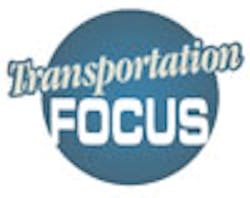There is little question that the security industry is on the fast-track to IP. The migration from legacy, hardwired to digital IP systems continues at a rapid pace, particularly for video surveillance. Transportation witnessed a similar transition. Rail stations and tunnels are increasingly integrating IP for audio, video and control purposes.
Rail stations were an ideal starting point, as organizations discovered that IP systems provide open standards that free them from closed, proprietary systems for passenger information and security. Existing network infrastructure can easily support various IP devices and components to build hybrid security and surveillance systems combining audio and video elements.
IP systems also better support communication in tunnels. Radio communications are problematic over long distances and tunnels present a significant challenge for such systems. Transportation departments are increasingly laying fiber-optic cable to connect multiple IP devices, including intercom and transmitter points, for comprehensive tunnel communications. Many IP-based tunnel systems support access control on the same network, enhancing security and protection in potentially dangerous situations.
Modern infrastructure brings options
In the U.S. market specifically, rail station and tunnel systems are migrating to IP as legacy systems age. Antiquated infrastructures are often connected via underground cables that have been immersed in moisture, are certainly rusty and often broken. This has an adverse effect on announcement quality and voice intelligibility-a significant problem when addressing a crowd in an emergency situation. Even when operating well, a traditional cable pair can typically carry only a single announcement, making individual announcements to different areas far more complex.
Once connectivity is established, IP-enabled networks provide a foundation that allows rail networks to build a comprehensive information and security system featuring digital signs, public address, video cameras and help points. Video provides monitoring and evidence but does not possess the real-time, interactive communications qualities of audio.
In addition to general and emergency com-munication, basic audio monitoring over an open channel will allow security personnel to detect fear or unusual activity in a large area. A directional microphone can capture audio and feed it to the monitoring center over an IP intercom channel, without eavesdropping on personal conversations and remaining in compliance with privacy laws.
On the train security trends
The IP-related trends we have seen in rail stations and tunnels are beginning to take hold on trains and carriages-especially for audio. Legacy systems remain inflexible on trains. There is a cumbersome wiring infrastructure to connect systems over multiple cars, requiring dedicated wiring for every component. As with tunnels, train personnel rely on radio systems for external communications.
IP technologies can more effectively link components between train cars, supporting audio transport over a single backbone to multiple end points including intercoms and overhead speakers. Two-way channels are made possible over IP connections, allowing train personnel to communicate general announcements to one or more train cars, or open a two-way conversation. Train personnel, or even passengers, can also communicate with an external operations center over the network in emergency situations, or notify passengers at upcoming stops of unusual situations.
Technology that may work in rail stations may not be immediately prepared for use on trains, as components are required to pass shock and environmental testing related to temperature, humidity and other factors prior to installation. Barix designed its Annuncicom 155 two-way audio over IP device to meet EN51055 standard requirements, passing tests for electronic equipment used on rolling stock. IP audio, video and control devices are paving the way in rail and transit applications and it's time for the technology to board the train.
About the Author
Johannes Rietschel
Johannes Rietschel
Johannes G. Rietschel is the chief executive officer and founder of Barix AG


